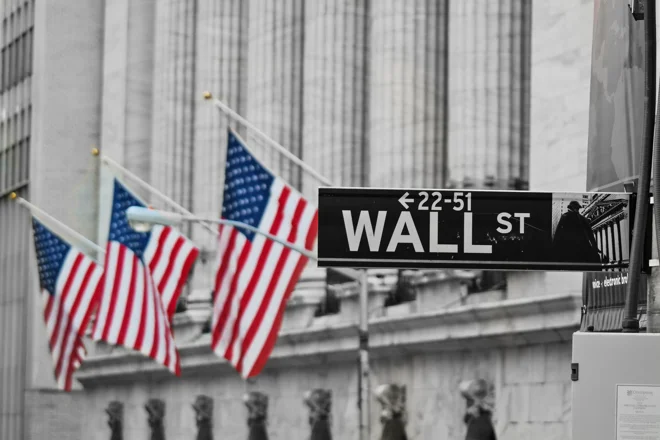Another month, another upside surprise in inflation. Yet the drivers appear the same: a handful of categories – such as used cars – are driving the spike, given strong demand pressing against constrained supply. There are two key lessons from this. The obvious one is that investors shouldn’t be anchored to just one scenario. John Maynard Keynes famously said “when the facts change, I change my mind” – to us, the facts (the underlying drivers) haven’t changed. But, if we were to see persistent wage growth across sectors and inflation expectations de-anchoring, this would be a sign that the facts are indeed changing. The deeper lesson is that investors shouldn’t excessively weigh the most recent events, or derive excessive consequences from the latest changes. Imagine that the inflation spike turns out to be more protracted and that the Fed raises rates a bit – from ultra-low levels. The latest market moves suggest that investors may be worried that even a minimal shift in the policy stance could weaken growth to quite an extent. We think the economy can cope with it.
Rates rally | Is it going too far? We think longer-dated Treasury yield levels are too low. The rally seems to have been driven by a decline in bond risk premia, with explanations ranging from concerns that the Delta variant may trigger new restrictions to worries that China may be slowing and the potential for a more hawkish Fed if the inflation spike was to become more enduring. While these are important risks, we believe that they don’t fully explain current yield levels and curve shape. We do see some deceleration in China and, of course, monitoring Fed policy and inflation is key. But it seems to us that these drivers have so far changed moderately. Covid-19, though, remains a ‘black swan’. At different speeds, the Delta variant is spreading in the UK, parts of the euro area, the US and Asia. Vaccination should diminish any hypothetical pandemic hit to global activity in coming quarters. Hospitalisations and fatalities are the things to watch.
Fed tapering | Can we handle it? While a more hawkish Fed would imply a flatter curve as rate hikes approach, we think the market is putting too much emphasis on scenarios where the US economy is unable to handle even such a modest degree of policy tightening, which is why inflation expectations appear to have peaked. Our macro outlook and interpretation of the Fed’s reaction function suggest a steeper curve versus market pricing. We believe that there’s a limit to how hawkish the Fed could become – unless inflation were to overshoot persistently, which isn’t our base case. An earlier rate lift-off may call into question the credibility of the Fed’s new framework tolerating higher inflation for a period of time to make up for past misses, potentially leading to risk-off sentiment. The discussion on tapering the central bank’s asset purchases could trigger market volatility. We expect an announcement over the next few months.
Here’s why this matters:
Bond yields to drift higher again: An important market debate is which near-term catalysts could push bond yields higher. To us, a likely candidate is indeed Fed tapering. By buying $120 billion per month in Treasury bonds and mortgage-backed securities, the central bank has put downward pressure on long-term yields. It now owns almost a quarter of the outstanding US Treasury market, up from not even 15% prior to the pandemic. Less Fed buying should help lift rates. What could have contributed to the latest fall in bond yields is that government bond issuance has slowed – as emergency support is getting discontinued and tax receipts are picking up at the same time – and pension-fund rebalancing could have been another factor too. These factors are ‘technical’ in nature and so are unlikely to play out continuously.
Looking through near-term volatility: The bond rally has led to a partial unwind of the reflation trade. But, if we’re still in an early expansion, and assuming that bond yields rise slightly but remain low, a mix of cyclical and more growth-oriented sectors should stay supported – from industrials to consumer discretionary, financials and tech. We remain pro-risk in our asset allocation. While the strong recovery rally which drove riskier asset prices substantially up from their 2020 lows is likely behind us, the current environment still favours equities and higher-risk credit. Our tactical positions include an overweight in US equities and UK small cap stocks, and in Asia high yield and EM bonds. Apart from Covid-19, the main risks to our outlook are a sudden drop in economic and earnings growth, and policy mistakes.
Meanwhile, all eyes on the European Central Bank this week…
Hanging on every word: The ECB strategic review delivered an upward revision to the inflation aim from “below, but close to, 2%” to symmetric around 2% (also taking into account measures of owner-occupied housing costs) – allowing temporary inflation overshoots to make up for past undershoots. This should allow the central bank to stay dovish even if inflation was to spike temporarily later this year. Particularly important will be the new policy statement, which should include a refreshed forward guidance, and President Lagarde’s press conference. In emerging markets, the central bank of Russia is expected to hike rates once again. The purchasing managers’ indices for the euro area, UK and US are the data highlight. They’ll likely stay strong, but markets will watch whether they surprise and in which direction. To some extent, the dataflow may look ‘outdated’ to investors, as any impact from the Delta variant (globally) and weather disruptions (in Europe) won’t be captured just yet.
Daniele Antonucci | Chief Economist & Macro Strategist
This document has been prepared by Quintet Private Bank (Europe) S.A. The statements and views expressed in this document – based upon information from sources believed to be reliable – are those of Quintet Private Bank (Europe) S.A. and are subject to change. This document is of a general nature and does not constitute legal, accounting, tax or investment advice. All investors should keep in mind that past performance is no indication of future performance, and that the value of investments may go up or down. Changes in exchange rates may also cause the value of underlying investments to go up or down.
Copyright © Quintet Private Bank (Europe) S.A. 2021. All rights reserved.





